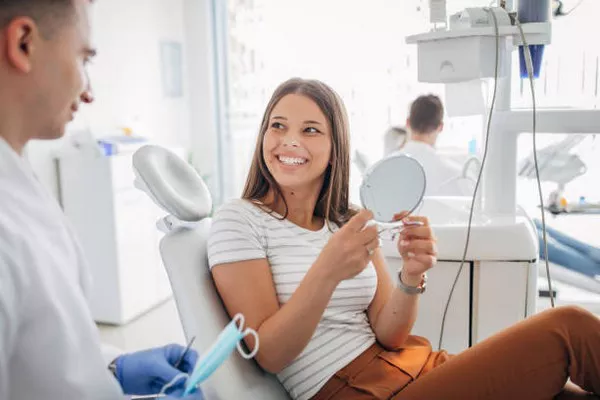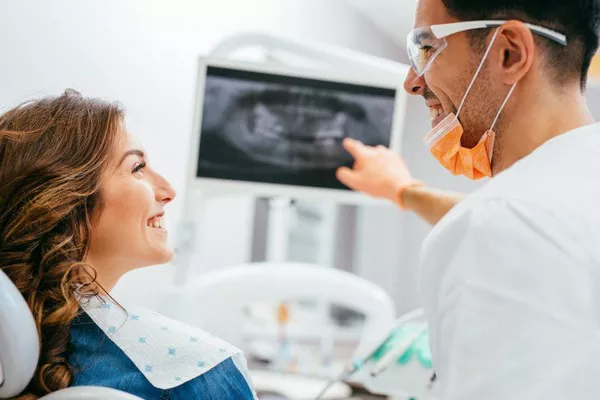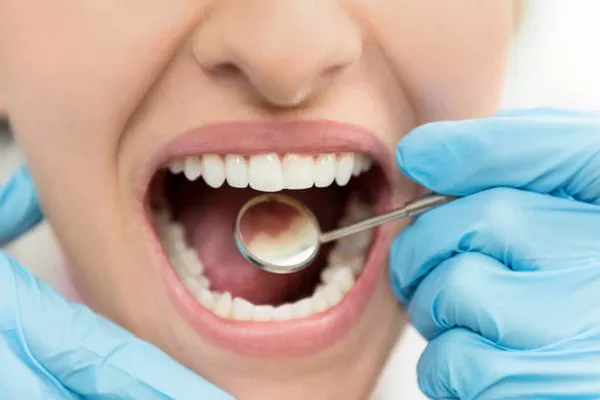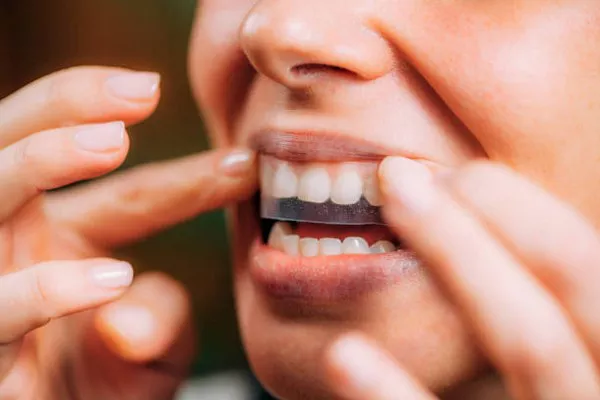22 Things You Need to Know about orthodontics 01. Does Orthodontics hurt?
Orthodontic treatment is not terrible. Braces are not a curse.
Today, the development of orthodontic technology is more and more inclined to light force orthodontic treatment, many technologies can provide safe and comfortable orthodontic treatment, so that patients do not feel pain or only mild discomfort.
During the treatment, the teeth feel sour distension and occlusion weakness are also temporary phenomena. Occasionally, there will be pain caused by mucosal ulcer, which can be generally tolerated.
02, correction must unplug tooth?
Tooth extraction is a common but not the only way to provide space.
When deciding whether to extract a tooth, the physician will consider four directions :(1) facial appearance.
(2) The Angle of anterior inclination of the upper and lower incisors.
(3) the extent to which the space required to arrange the teeth and the size of the jaw differ.
(4) Envision the occlusal relationship to be achieved after treatment.
In addition to tooth extraction, there are many clinical methods such as anterior and posterior or lateral expansion of the dental arch, slice cutting (moderate grinding of the tooth) and so on.
Specific choice of which means, must consult a professional orthodontist.
03, can you stay between the teeth after unplugging tooth correction?
Orthodontic is to move the tooth from its original position to a new position, while orthodontic extraction is to use the space created by tooth extraction to align the tooth or recover the protruding tooth.
Therefore, as long as the standard orthodontic treatment, under normal circumstances can let the teeth finally close, restore the normal tooth adjacency relationship, will not leave the gap between the teeth.
04, correction can only wear braces?
Correction methods are flexible, and the prevailing technique is to use fixed appliances glued to the teeth, commonly known as braces.
These include metallic steel braces and beautiful ceramic braces that are close to dental color.
In addition, there are lingual orthodontics on the inside of the tooth and invisible orthodontics without brackets that the patient can pick and wear freely, which have no effect on the appearance.
05, wearing braces will corrode the tooth surface?
Adhesive on the surface of the tooth correctional implement, USES a special oral enamel adhesive and fixed on the surface of the treated teeth clean about two years, the treatment after removing will not influence on the tooth surface, the corrosion mainly because of poor oral hygiene cause actually the braces around the tooth surface of enamel demineralization, poor oral hygiene is the culprit.
06, orthodontic can thin face or change face shape?
This effect can not be overstated, the orthodontist’s job is to move the teeth, especially the position of the anterior teeth changes, the nearby alveolar bone also changes to a certain extent, the position of the lips and the relationship between the lips and teeth will also change.
This results in changes in facial appearance below the nose, rather than changes in facial width or other facial shape.
07. Is correction just for aesthetics?
Many young people orthodontic, is to improve teeth and even appearance, but the effect of orthodontic is not limited to this.
Most middle-aged and elderly people seek correction for health and function.
Straight teeth are easier to clean, which is beneficial to the health of teeth and periodontal tissue. After correction, the ideal occlusion relationship can be obtained, and the chewing function can be improved.
Perfect correction can achieve health, function, beauty and long-term stability of harmony and unity.
08, the greater the correction force, the better?
Tooth movement is a slow physiological movement of bone cells involved in remodeling, which is different from the physical and mechanical phenomenon in the macroscopic world. It is by no means that the greater the force, the faster the movement speed.
In fact, very little force can move the tooth, but too much force can stop the movement or cause many side effects.
09, the age can be corrected?
Tooth movement is a lifelong process of bone remodeling, so orthodontics are suitable for all ages.
But different people have different problems, and the time to start correcting them is different.
Children as young as 3 or 4 years old, up to 80 or 90 years old, can become the target population of correction, whether can be corrected, should seek professional orthodontist consultation.
10, adult orthodontics will rebound?
Generally speaking, it will not rebound. Before correction, the doctor will make a detailed diagnosis of the patient’s tooth fault and the situation, and then determine the appropriate treatment plan for the patient.
In the process of correction, the doctor will take some precautions according to the specific situation of the patient’s tooth arrangement.
If you don’t listen to the doctor’s advice during the correction, such as eating arbitrarily (biting hard foods such as walnuts) and not going to the doctor’s appointment on time, then the corrected teeth are easy to rebound.
11, after orthodontic old meeting tooth drop?
Healthy teeth last a lifetime.
Early tooth loss is mainly due to periodontitis, which leads to tooth loosening and falling off. The key pathogenic factor of periodontitis is plaque microbes in the mouth. Whether suffering from periodontitis has nothing to do with whether the teeth have been orthodontic.
12, orthodontic will affect the child’s height development?
Some parents worry that many diets are contraindicated during orthodontics, which will affect the child’s development. However, in fact, there is no absolute contraindicated diet in orthodontics. The key is to understand the dietary precautions and have a reasonable and balanced diet.
13. Can’t you start to correct the teeth before they are replaced?
The specific problems of different individuals are different. Considering the growth and development of teeth and jaws, the time of starting orthodontic treatment varies from early orthodontic treatment in the primary and replacement stages to comprehensive orthodontic treatment after tooth replacement and adulthood, which should be judged by professional orthodontists.
14. How to choose orthotics?
Is more expensive better?
Of course, the more expensive the better, the key to the success of orthotics is the skill of the physician and the attitude of the patient.
Even the latest digital invisible braces, whether traditional, self-locking or lingual, require the patient to wear a rubber band.
15, how is orthodontic to use bone nail to return a responsibility?
In THE CASE OF MISSING POSTERIOR TEETH AND INSUFFICIENT ANCHORING, THE USE of bone pins OR POSTERIOR implants TO ALIGN the ANTERIOR TEETH may be the best option at present.
16. How long should I wear the orthodontic retainer?
Because after orthodontic teeth on the new location is not so stable, must have the aid of retainer to maintain the new tooth position, wait for alveolar bone reconstruction, wearing a retainer time about for a year and a half or so, especially adults do correction, having missed the youth rapid developing the best period of orthodontic treatment need a longer period of time, about 2 to 3 years.
17, after wearing tooth cover, cannot eat hard thing?
Straining to eat foods that are too large, hard, or sticky can deform or fall off the device, prolonging treatment as long as the device keeps falling off.
It is recommended to eat slices, not whole bites, or you can use a small food conditioning scissors, cut large pieces of food before eating.
18, after orthodontic meeting loose?
The tooth itself does not stay in place all its life, but is in a balance between stability and movement.
Correction is to temporarily break the balance by applying force to move the tooth.
The bone remodeling caused by the correction will bring about the physiological movement of the tooth, and a certain degree of loosening during the movement is normal for a short period of time.
When the tooth moves to a new position and rebalances, it stabilizes.
19, as long as the dentist can do correction?
Stomatology is divided into different specialties. Only in the postgraduate stage can we systematically learn orthodontic specialty, receive standardized professional training and practice continuously.
Other professional dental experts can not carry out professional orthodontics, but must be orthodontic specialist to do, many countries to implement specialist system and legislative protection, is the so-called specialty has specialized.
20, orthodontics can only solve dental problems?
Correction can change the position of teeth, lip-tooth dependence, and then can change the position of lips to the front and back, bring about soft tissue profile changes, in addition, the change of lip-tooth relationship can also bring about changes in smile aesthetics.
So orthodontics don’t just solve dental problems, they also change your appearance in a big way.
21, serious periodontitis is correction contraindications?
No, untreated or controlled periodontitis cannot be corrected, but stable periodontitis can.
Severe periodontitis often has obvious pathological tooth displacement or loosening, and orthodontic treatment is also in the treatment of periodontal disease. Applying the biological limit of orthodontic force will not worsen periodontal disease, but will improve the condition.
But for such patients, it requires the cooperation of physicians with different specialties.
22, buck teeth or dental inalignment can be corrected through 7 days of rapid correction method?
The so-called rapid correction of cosmetic crowns is essentially to make porcelain crowns after grinding teeth small, which damages the health of teeth for the sake of beauty.
To really change the alignment of healthy teeth, the current correct solution is to wear orthotics, usually for about two years.
The physical movement of teeth is a slow process, and correction must be done at the cost of time. There are no shortcuts.































